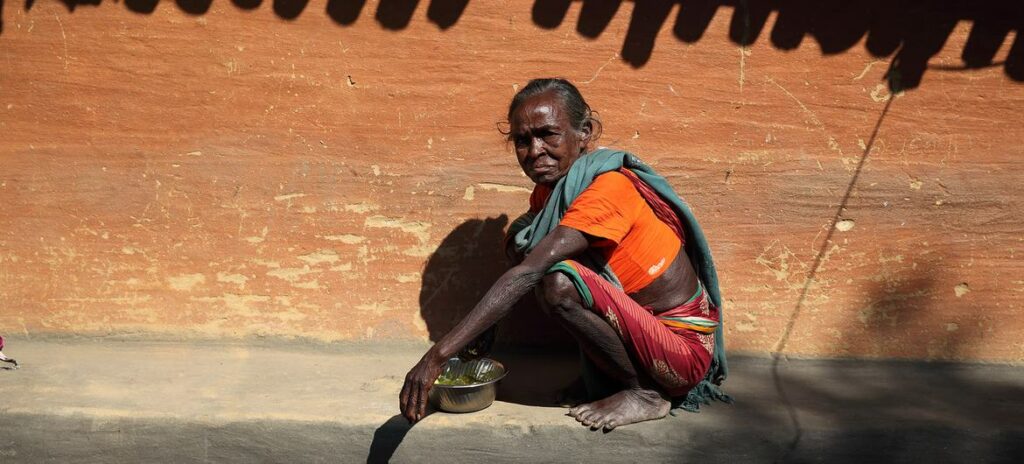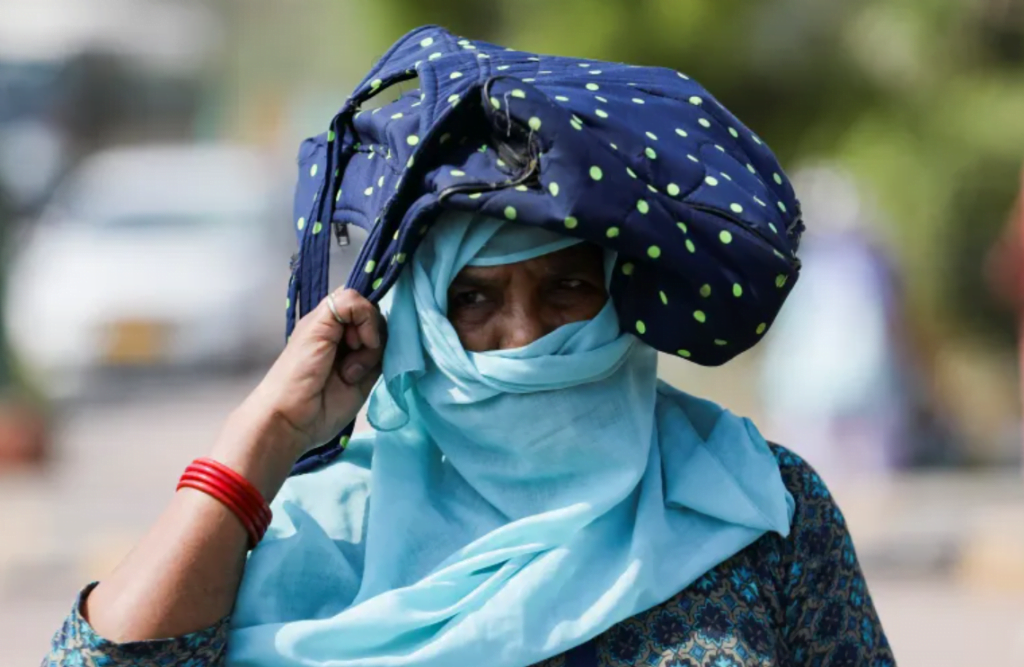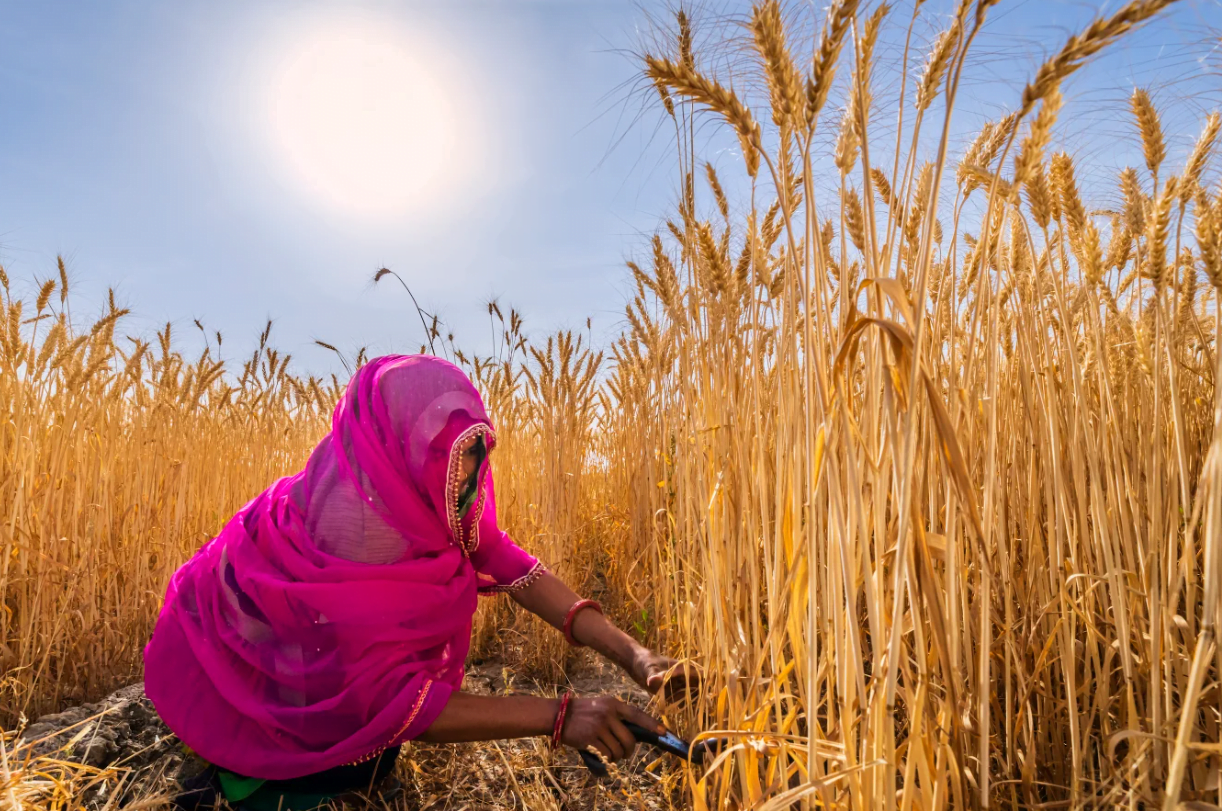Nisha, a 30-year-old domestic worker, wiped the sweat from her brow as she trudged from one household to the next, her younger sister Nikita, 25, in tow. The scorching summer sun beat down mercilessly, making their rounds of the five houses they could now manage to clean, a far cry from the seven to eight they used to tackle before the heat became unbearable.
‘Even in early March, I ran from one house to the next, mopping floors and doing dishes all day long,’ Nisha said, her voice laced with exhaustion. ‘But now, the heat is so intense, I feel like my skull might crack open by the time we finish our rounds.’ Nikita nodded, her face flushed from the relentless heat, ‘..some of the households have asked us to do the dishes outside, drawing water from their wells, in this scorching heat, you say, is it feasible?’
Nikita and Nisha like many women in India are struggling to maintain their livelihoods and care for their families amidst the oppressive heat. These women face a double burden, as the heat not only reduces their productivity and incomes but also increases their unpaid care work, further entrenching their marginalisation.
The climate crisis is indeed disproportionately impacting women, intensifying existing gender inequalities and pushing them further into vulnerability.
Exacerbating existing gender inequalities
In essence, the intersection of gender, socioeconomic status, and climate change-related risks places women in India at a higher disadvantage, increases the existing inequalities, and makes them more susceptible to the impacts of rising temperatures and extreme heat events.

Down To Earth reveals a concerning gender disparity in India when it comes to coping with extreme heat. This recent analysis published in Significance Magazine has revealed a concerning trend in India – a gradual increase in heat-related deaths among women since 2005, even as male mortality rates have declined. The researchers, led by Ramit Debnath from the University of Cambridge, highlighted the lack of granular and high-quality national data as a significant challenge in understanding this gendered dimension of the climate crisis.
The analysis showed that the percentage change in mortality rate increased by 4.63 per cent for women from 2000 to 2010, and by 9.84 per cent from 2010 to 2019. In contrast, men exhibited a 23.11 per cent decrease in the same period, possibly due to advancements in public healthcare and increased access to cooling technologies.
The researchers noted that the Global North has stronger evidence of women being at higher risk of weather-related mortality, while the evidence from the Global South, including India, is conflicting. This is partly attributed to the lack of data on the population that spends more time indoors, where women in India spend 54 per cent more time than men.
Thus underscoring the urgent need for comprehensive, gender-disaggregated data to understand the underlying factors driving this disparity and inform evidence-based policies to address the gendered impacts of the climate crisis.
Economic vulnerabilities and domestic burdens
The vulnerability of women in India is further heightened by socioeconomic factors. A significant proportion of women are employed in the manufacturing and service sectors, which have seen significant declines in home-based work due to the impacts of rising temperatures. These women, often with lower levels of education and earning significantly less than their male counterparts, are more economically vulnerable to the effects of the climate crisis.

The disproportionate burden on women is not limited to the workplace; it extends to the domestic sphere as well. Extreme heat waves force families to spend more time at home, leading to increased domestic workloads for women and fueling anger and frustration among men who are unable to provide for their families. This dynamic can contribute to a rise in domestic violence, further exacerbating the challenges women face.
Gender-based violence and rising temperatures
A recent study by JAMA Psychiatry has uncovered a chilling link between rising temperatures in South Asia and a disturbing increase in intimate partner violence against women, with India projected to experience the most severe impact. The study tracked over 194,800 girls and women aged 15-49 across India, Nepal, and Pakistan, revealing that a mere 1°C rise in annual mean temperature was associated with a 4.5 per cent increase in domestic violence.
Particularly alarming is the finding that India could see a staggering 23.5 per cent surge in intimate partner violence by the 2090s under an unlimited carbon emissions scenario, with the disproportionate burden falling on lower-income and rural households. Experts attribute this crisis to the economic strain and heightened tensions caused by climate-related challenges, such as decreased agricultural productivity and employment opportunities, as well as the way extreme heat waves – which are becoming more frequent and intense in the region – contribute to increased domestic workloads for women and fuel anger and frustration among men unable to provide for their families.
Urgent action is needed to address the intersecting crises of climate change and gender-based violence, which threaten to undermine the safety and well-being of millions of women and girls in one of the world’s most vulnerable regions.
The need for urgent action
As the climate crisis intensifies, the devastating effects of heatwaves are disproportionately impacting women’s reproductive health. Extreme heat can have a range of negative consequences, from menstrual irregularities to reduced fertility. The disruption is largely attributed to the way heat stress can alter hormonal balances and cause dehydration, which can adversely affect the reproductive system.

For pregnant women, the risks posed by heatwaves are even more pronounced. Extreme heat can lead to complications such as premature labour and delivery, preeclampsia, and neural tube defects. The physical strain of extreme heat, coupled with the unique physiological changes during pregnancy, can create a perfect storm of health challenges for expectant mothers.
Beyond the physical impacts, the mental health repercussions of heat waves should not be overlooked. Heat-induced stress, anxiety, and sleep disturbances can affect women’s mental well-being and overall reproductive health.
The climate crisis is not gender-neutral, and these stories make it clear that women, especially those living in the Global South, are bearing the brunt of its impacts. The lack of granular data and adequate policy responses to address this gendered dimension of the crisis is a glaring gap that must be urgently addressed.
The intersectionality of gender, socioeconomic status, and climate change-related risks paints a sobering picture of the challenges particularly, women in India face. These compounding factors place them at a higher disadvantage, exacerbating existing inequalities and making them more susceptible to the impacts of rising temperatures and extreme heat events.
The implications of this crisis extend beyond individual experiences, as it can have far-reaching consequences for the broader society. The disproportionate impact on women’s livelihoods, health, and safety can lead to a further widening of the gender gap, undermining progress towards gender equality and sustainable development.
Governments, international organisations, and civil society must take concerted action to ensure that climate adaptation and mitigation strategies are gender-responsive and prioritise the needs and vulnerabilities of women. This includes investing in resilient infrastructure, improving access to healthcare and cooling technologies, and centring the voices and experiences of women in decision-making processes.
By recognising and addressing the gendered nature of climate injustice, we can work towards a more equitable and sustainable future, where women are empowered to adapt and thrive in the face of the climate crisis.






